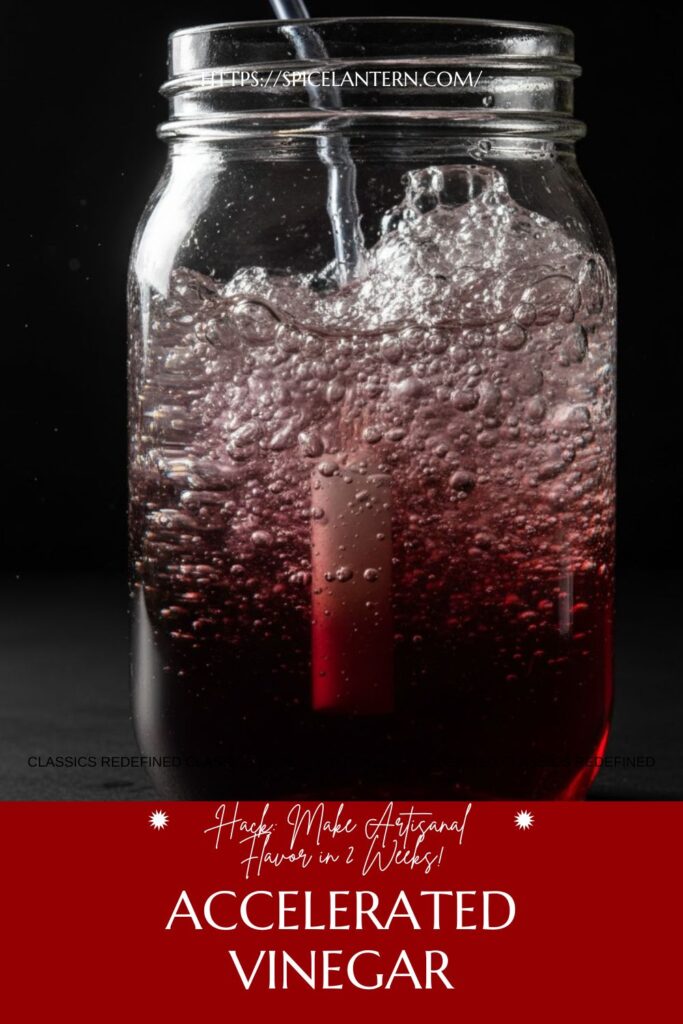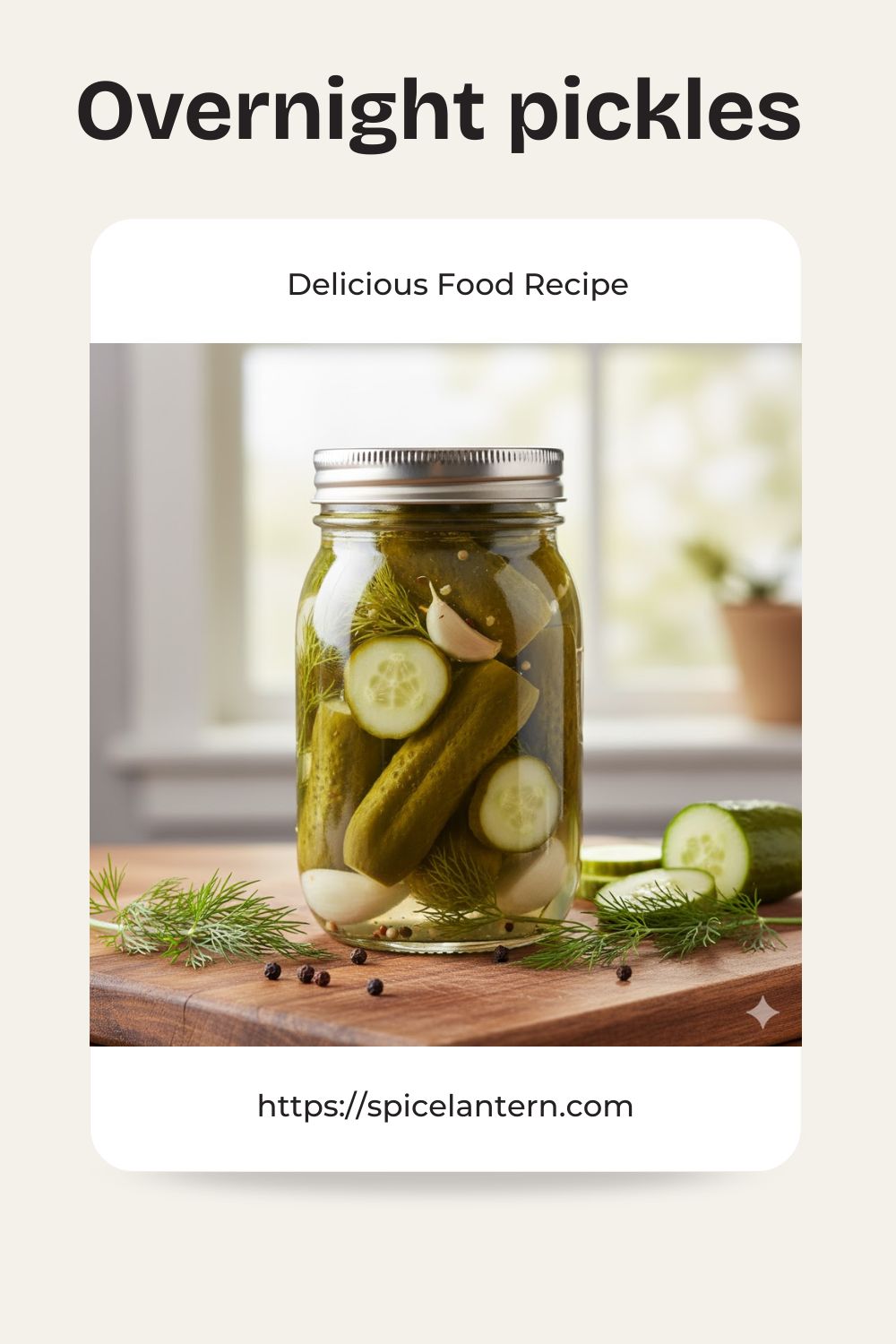Sour Power, Fast! Your Guide to Accelerated Vinegar (The Two-Week Brew)
You know that deep, complex, tart flavor that instantly elevates a salad dressing or a soup? That’s good vinegar. The problem? Traditionally, good vinegar takes months of passive, slow fermentation—which is great if you’re a patient artisan with a cellar, but completely pointless for a busy foodie like you. I cracked the code on Accelerated Vinegar. This method uses a clever little hack to drastically speed up the natural fermentation process, turning wine or cider into sharp, beautiful vinegar in just a couple of weeks instead of two months. Why wait until Thanksgiving when you can have artisanal flavor by the end of the month?
Why This Recipe Is Awesome (It’s Cheating, But the Good Kind)
We’re bypassing the long, slow oxidation process. This recipe is awesome because:
- Warp Speed Fermentation: We use a secret weapon appliance (hint: it involves bubbles!) to provide the acetic acid bacteria (AAB) with the massive amount of oxygen they crave. More oxygen equals more speed. It’s like giving your microbes an espresso shot!
- Flavor Control: You start with the wine or cider you love, so you already know the base flavor. This gives you better, more complex results than that harsh, white distilled stuff. You choose your own destiny, and it’s delicious.
- Zero Waste Hero: Have a half-bottle of that wine you didn’t quite finish? Don’t pour it down the drain—turn it into amazing cooking vinegar! You’re not wasting wine; you’re future-proofing your dressings!
Ingredients: The Wine and The Mother
The ingredient list is wonderfully minimal, but the “starter” is absolutely crucial for the accelerated method.
- 3 cups Wine or Hard Cider (or Alcohol Base): Red or white wine works beautifully. The ideal alcohol content is 5-9% ABV. Higher than 12% ABV needs diluting!
- ¾ cup Raw, Unpasteurized Vinegar (with the Mother): This is your Mother of Vinegar (MOV), or just “Mother.” It’s the live culture (Acetobacter) that converts the alcohol to acetic acid. Make sure the label says “raw” or “unfiltered” to guarantee live bacteria.
- 2 cups Filtered Water: To dilute the alcohol content slightly and ensure the AAB are happy.
Key Substitutions:
- Alcohol Base: Use hard cider, beer (lager or ale, not hoppy IPA), or even a fermented fruit juice. Just check the ABV and dilute anything over 12% with water.
- Mother of Vinegar: If you can’t find a raw MOV, use a piece of Kombucha SCOBY (seriously!) and some of its liquid. It also contains the necessary Acetobacter.
- Water: Use boiled and cooled water to ensure no chlorine kills your precious bacteria.
Tools & Kitchen Gadgets Used: Your Mad Scientist Kit
Time to get a little geeky. This hack requires one specific, easy-to-find item.
- Glass Mason Jar (Half-gallon or 64oz): Must be glass. Plastic can leach, and metal (except stainless steel) reacts with acid.
- Airlock/Bubble Pump Kit: This is the secret weapon. You need an aquarium air pump, an air stone, and tubing. This constantly forces oxygen into the liquid, speeding up the process from months to weeks.
- Brewing Thermometer: For monitoring the temperature of the liquid (ideally 77-85°F).
- Cheesecloth or Coffee Filter: For covering the jar when not using the air pump, letting it breathe while keeping bugs out.
- Hydrometer or pH strips (Optional): For measuring acidity if you want to be extra nerdy.
Step-by-Step Instructions: Harnessing the Bubbles
We’re skipping the multi-month wait and demanding results. Let’s make some vinegar!
Step 1: The Initial Mix (3 Minutes)
- Pour the wine/cider and the filtered water into your clean glass jar.
- Add the raw vinegar starter (MOV). Gently stir everything together with a wooden or plastic spoon.
- Check the temperature: Aim for 77–85°F (25–30°C). This is the AAB sweet spot. You might need to set the jar on a heating mat or in a warm spot, especially in cold weather.
Step 2: The Oxygen Boost (10-14 Days)
- Set up your aquarium air pump apparatus. Place the air stone at the bottom of the jar and connect the tubing to the air pump outside the jar.
- Turn the pump on and let it run. The pump must run continuously for the entire acceleration phase. The bubbles constantly aerate the liquid, forcing the AAB to convert the alcohol into acetic acid incredibly fast.
- If you don’t have a pump (or don’t want to buy one!), simply stir the liquid vigorously with a wooden spoon twice a day for 1 minute each time. This is less effective, but still faster than leaving it alone.
Step 3: Monitor and Taste (Daily)
- Watch the liquid. You will notice a film (the Mother) may start to form on the surface, but the constant bubbling will likely keep it submerged or broken up. This is a good sign!
- After about 7 days, start tasting it daily. Draw a small sample from the liquid (not the top film).
- Initially, it will taste alcoholic. As the process completes, the alcohol flavor disappears and is replaced by a sharp, acidic tang.
Step 4: Halt the Fermentation (The Final Sour) (1 Minute)
- When the vinegar reaches the flavor and acidity you like (usually after 10-14 days with the pump, or 3-4 weeks stirring), stop the air pump.
- Strain the vinegar through a cheesecloth-lined strainer to remove any large pieces of the mother or sediment.
- Pasteurize to stop fermentation: Heat the vinegar in a stainless steel saucepan to 155°F (68°C) and hold for 30 minutes. Do not boil! This kills the AAB, stopping the conversion and preserving the final flavor.
Step 5: Bottle and Age (Passive Time)
- Pour the warm vinegar into airtight, sanitized glass bottles (like swing-top bottles).
- Seal them tightly and store them in a cool, dark place. Aging the vinegar for a few weeks to a few months lets the harsh flavor mellow out and gives it depth. You’re done!
Calories & Nutritional Info: The Zero-Guilt Garnish (Estimated)
Vinegar is wonderfully pure. Enjoy the flavor without the fuss.
- Calories per serving (1 tablespoon): ~0-3 calories
- Carbohydrates/Sugar: 0g (The sugar in the original base was converted to alcohol, then to acid.)
- Fat/Protein: 0g
- Health Note: Raw, unpasteurized vinegar (if you skip Step 4) contains some beneficial bacteria, but the main benefit here is the low acidity pH (around 3.0), which acts as a great natural preservative.
Common Mistakes to Avoid: Stop Sabotaging Your Sour
Making vinegar is easy, but the conditions must be right. Don’t be that person.
- Alcohol Content is Too High: AAB get drunk and die if the starting alcohol is over 12% ABV. If you use hard liquor or strong wine, dilute it with water to bring the ABV down to the ideal 5-9% range.
- Airtight Seal: You are not fermenting beer! AAB need oxygen to survive and work. Sealing the jar tightly (without the pump) starves the bacteria. Always use a breathable cloth cover if you aren’t using the pump.
- Using UHT/Pasteurized Vinegar: Pasteurization kills the bacteria! You must use a starter that contains live Acetobacter—labeled as “raw,” “unfiltered,” or containing “the Mother.”
- Temperature Tantrums: AAB work best between 77-85°F. Too cold, and the process stalls (hello, two-month wait). Too hot (above 95°F), and the bacteria die. Find a steady warm spot!
- Ignoring the Pasteurization Step: If you skip heating the vinegar to 155°F, the AAB will continue to eat the remaining alcohol and eventually over-oxidize the vinegar, making it taste weak or bland over time.
Variations & Customizations: Your Acidic Artistry
The base determines the flavor. Get creative with your fermentation liquid!
- Raspberry Rosé Vinegar: Start with a cheap rosé wine (5-10% ABV). After straining the finished vinegar (Step 4), add 1 cup of fresh or frozen raspberries to the bottle. Let it infuse for two weeks, then strain again. Perfect for salad dressings!
- Spicy Garlic & Herb: Add a sprig of fresh rosemary and a few cloves of smashed garlic to the jar after the pasteurization step (Step 4) to infuse the flavor without risking contamination during the active ferment.
- Malt Vinegar Mayhem: Use a non-hoppy brown ale or porter (5-7% ABV) as your base. The final result will be a rich, dark vinegar perfect for dipping french fries or seasoning stews.
FAQ Section: The Sour Science Demystified
Embrace the acid! Here are the most common questions about making vinegar.
Q1: Do I need the Mother of Vinegar (MOV) to start?
A: No, but it helps tremendously. Acetobacter naturally exist in the air. However, adding a raw, unpasteurized vinegar starter ensures you introduce the right bacteria immediately, accelerating the process and guaranteeing success.
Q2: What is the slimy film on top of my vinegar?
A: That is the Mother of Vinegar (MOV)! It’s a film of cellulose and Acetobacter bacteria. It’s a healthy sign of fermentation. You can strain it out or keep it to start your next batch.
Q3: Why did my vinegar mold?
A: Mold usually forms if your starting liquid had too little alcohol or was too cold (allowing mold to outcompete the AAB). Ensure the liquid is between 5-9% ABV and stays warm during fermentation.
Q4: What is the ideal acidity for cooking vinegar?
A: Most homemade vinegars stabilize around 5-6% acidity, which is comparable to commercial distilled vinegar and perfect for cooking, pickling, and preservation.
Q5: Can I use hard liquor like vodka to make vinegar?
A: Yes, but you must dilute it heavily with water or juice (like apple juice). Aim for the final mixture to be no more than 10% ABV before adding the starter.
Q6: How long does homemade vinegar last?
A: Once bottled and sealed, homemade vinegar lasts indefinitely at room temperature in a cool, dark place. The high acidity acts as a natural preservative.
Q7: Should I use a plastic or metal strainer for straining the Mother?
A: Stainless steel or plastic is safe for the brief contact needed for straining. Avoid reactive metals like aluminum, copper, or iron for prolonged storage, as the acid can leach them out.
Final Thoughts: The New Authority on Acid
You just took a $10 bottle of wine and turned it into $50 worth of artisanal vinegar in two weeks flat. You mastered Accelerated Vinegar—a process so smart, it’s almost arrogant. Go ahead and drizzle that sharp, complex acidity over everything. Your friends will ask where you bought this incredible vinegar, and you can give them a sly, knowing smile.







